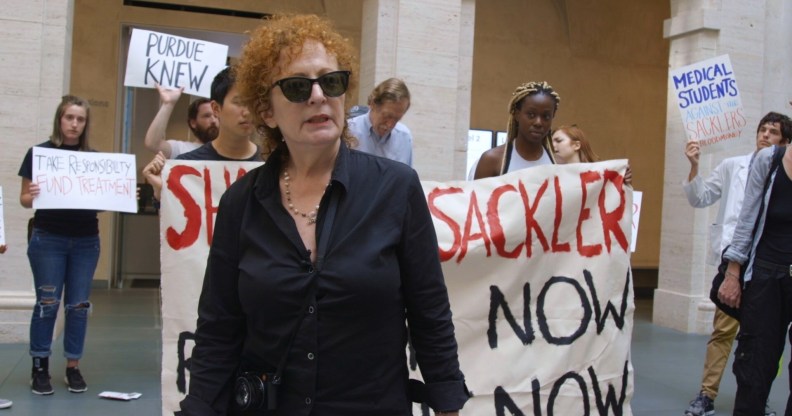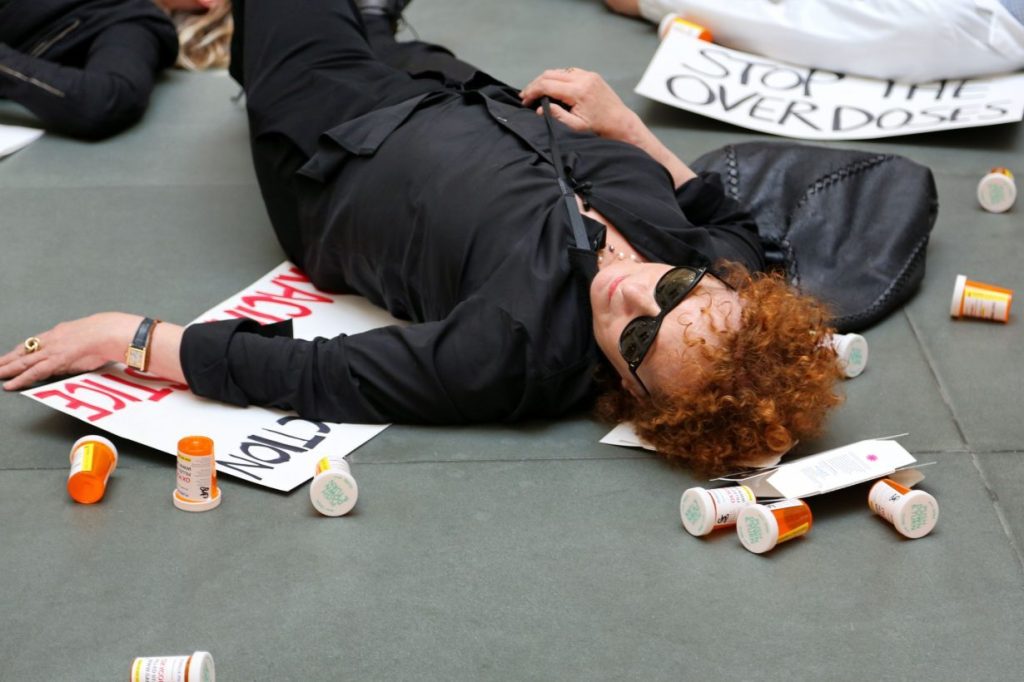This gripping Oscar-nominated documentary explores the life of queer artist Nan Goldin

‘All the Beauty and the Bloodshed’ explores the life and activism of Nan Goldin (All the Beauty and the Bloodshed/ HBO)
All the Beauty and the Bloodshed, which chronicles renowned artist Nan Goldin’s work and activism, has been nominated in the best documentary feature at the Oscars.
Directed by Oscar-winning filmmaker Laura Poitras, the film, which also scooped the Golden Lion at the 2022 Venice International Film Festival, examines the life and career of Nan Goldin, and her efforts to hold the billionaire Sackler family accountable for their hand in the American opioid epidemic.
Here’s everything you need to know about Nan Goldin’s life, art and activism.
Who is Nan Goldin?
Born in 1953, Nan Goldin is a bisexual American photographer and activist. Her work often explores queer subcultures, moments of intimacy, relationships of gay men in the HIV/AIDS crisis, and the opioid epidemic.
Her most notable work is often deemed as The Ballad of Sexual Dependency, an autobiographical slideshow dedicated to music and art scene, the ‘post-Stonewall’ gay subculture of the late 1970s and early 1980s, the heroin subculture of the Bowery neighborhood, and Goldin’s personal family and love life.
Goldin’s sister committed suicide due to her sexuality when Goldin was just 11, in 1965. She had left home by the age of 14, enrolling in a community school at 16, where a teacher introduced her to a camera. Still struggling with her sister’s death, Goldin used photography to cherish her relationships with those she photographed.

What did Nan Goldin do?
Goldin’s photography exemplifies a deep immersion within many of New York’s subcultures, particularly the LGBTQ+ community. She used her work to capture relationships and freeze them in time, so as not to forget them when they died.
Goldin’s first solo show, held in Boston in 1973, was based on her photographic journeys among the trans and gay inhabitants of New York.
In the late 70s and early 80s, The Ballad of Sexual Dependency bought Goldin to the fore as one of the most groundbreaking and brutally honest photographers of the time, unafraid to explore the ins and outs of the queer community.

By the 90s, most of the subjects photographed in The Ballad of Sexual Dependency were dead, either from HIV/AIDS or drug overdoses.
In 2017, Goldin began her work to take down the Sackler family name after forming campaign group P.A.I.N (Prescription Addiction Intervention Now).
The group initially aimed to employ direct action tactics to expose the Sackler family and their culpability in fuelling the opioid crisis through the manufacture of their prescription painkiller OxyContin. The opioid crisis in the US has caused approximately one million deaths since 1999.
What work is All the Beauty and the Bloodshed based on?
In 2017, Nan Goldin revealed in a speech in Brazil that she was recovering from prescription opioid addiction after receiving OxyContin for a sprained wrist.
She subsequently published a photo essay in Artforum Magazine, documenting her experience to the drug, which is highly addictivem and produced by Perdue Pharma, formerly owned by the Sackler family.
The Sackler family founded and owned two behemoth pharmaceutical companies, Perdu Pharma and Mundipharma. According to multiple reports, members of the family have faced lawsuits regarding overprescription of addictive pharmaceutical drugs, including OxyContin. Due to their hefty donations to certain museums and galleries, the name was placed on the buildings.
All the Beauty and the Bloodshed is the documentation of Goldin’s efforts to hold the Sackler name accountable.
Nan Goldin narrates the film, and her photography is interspersed throughout. Each of the film’s seven chapters feature a photographic sequence or archival footage of a period of Goldin’s life and transitions to footage of her recent protests with P.A.I.N.
All the Beauty and the Bloodshed includes footage of P.A.I.N. demonstrations, including its first 2018 protest at the Metropolitan Museum of Art, as well as similar demonstrations at the Louvre and the Guggenheim Museum.
Has Goldin’s activism had any effect?
According to outlet NPR, in the years since Goldin founded P.A.I.N., the group’s protests have been a major factor in getting institutions like the Met, the Guggenheim and the Louvre to remove the Sackler name, which were previously placed on the museums after the family donated to them.
“If Nan hadn’t stood up, I am confident that the Sackler name would still be on the museums,” Poitras told them.
“What Nan has done throughout her work is really talking about things that are deeply personal in a way to destigmatize them so that we can have conversations and that also we can talk about where the responsibility really belongs — which, in this case, is on Purdue Pharma and the Sacklers.”
In 2021, Purdue Pharma filed for bankruptcy.
All the Beauty and the Bloodshed premieres on HBO on 19 March and will also be available to stream on HBO Max therafter.

